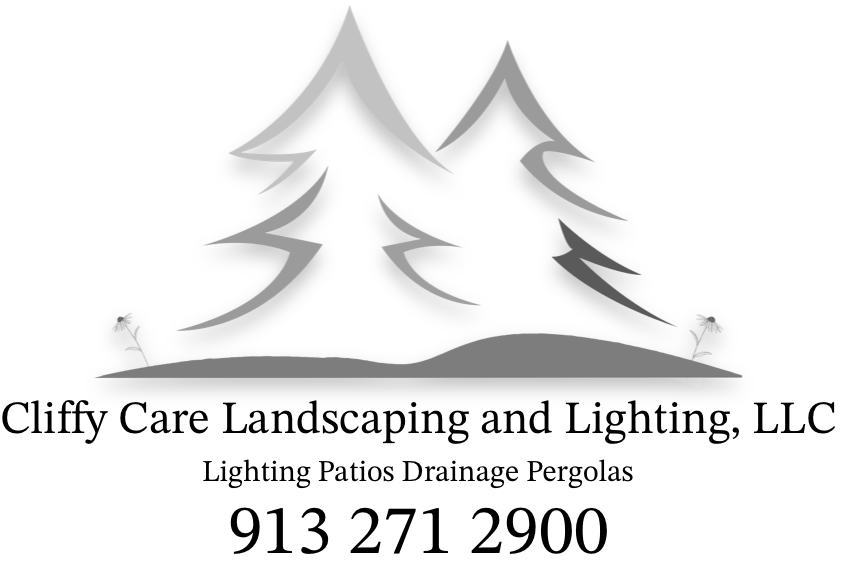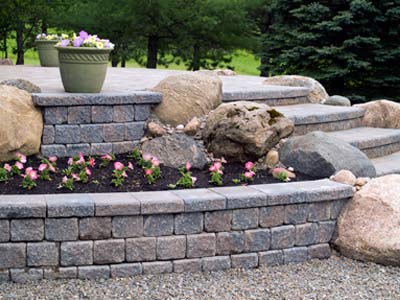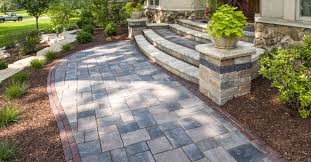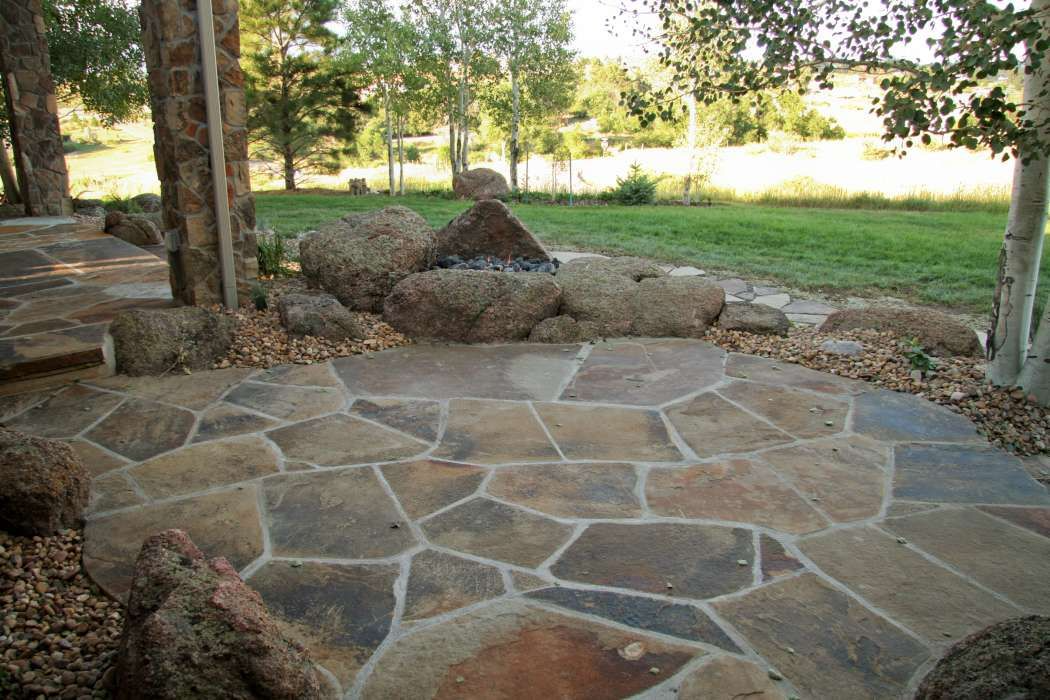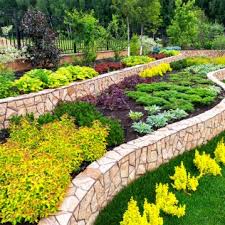Retaining Walls and Paver Patio Installation in Kansas City
Experts In Kansas City Retaining Walls, Paver Patios & Flagstone Work
Here at Cliffy Care we pride ourselves in top quality installation of any masonry work, including paver patios, flagstone installation and retaining walls in Kansas City, Lenexa, Prairie Village, Overland Park, and Olathe, KS, while also using the best local materials while also exceeding industry standards for our installation process. In this short guide we will lay out how we install our local stonework, like paver patios, flagstone, and retaining walls, what type of stonework may be called for for common scenarios and the possible pros and cons of different types of projects. Let’s start with the most important part of stonework, the foundation!
The How
For any type of stonework the key is a solid foundation. All types of stonework begins at this step. In most cases we will begin by excavating either a trench for seat and retaining walls, while patios and pathways will also be dug out. This is an area that outlines where any type of stonework may take place. After excavating down at least 6-8 inches this area will generally be filled with either a paver base(ab3, buckshot gravel, sand ect.) or, in the case of larger structures or walls that exceed 3 feet in height above grade(ground level), a concrete footing or pad may be required. This material is then graded and compacted at roughly 4000 psi with machinery. Patios are always built with a slight slope (roughly 1 inch across 8 feet) to ensure that any excess moisture will run off of the stonework.
After a firm foundation has been installed comes the fun part! Stacking, cutting and piecing in stone. In the case of flagstone cutting is generally not required because people want the natural look. It’s much more common to either fill your joints will decorative gravel, mulch, polymeric sand and mortar. Mortar will give you the most longevity but is also more expensive to fix since it requires removal of old mortal in most cases. Mulch and gravel needs to be replaced every few years if you want to maintain a fresh look but is easily more affordable since it requires less than half the labor.
Our Kansas City Retaining walls and seat walls very greatly on how much cutting is required but with over a dozen different options in style of stone available we can design with that in mind. Most curved walls are built with trapezoidal blocks for smoother transitions while straight walls are built with rectangular blocks to help ensure those corners are flush with a clean 90 degree turn. Capstones are optional but highly recommended since they increase the structural strength and add a great finished, professional look while also creating a lip for the installation of landscaping lighting for your seating area or walkways nearby. Lighting can be installed after the installation but if you want seamless no show wiring it has to be installed as the wall goes in so we can score the stone and tuck the wires inside of the wall blocks.
Every layer of stone is laid in to create “T’s” versus a straight vertical stack. This is a vital design requirement since vertically stacked stone is one strong wind away from being horizontally not stacked stone. All stones are joined together with the best available outdoor adhesive. In the case that a wall is installed on a concrete pad we will adhere the stones directly to the concrete as well. In some instances bore holes may be drilled and rebar inserted.
Our Kansas City Paver patios start from the outside and then we work our way in. Since most paver stones come in patterns of multiple sizes, it gives us the ability to make a solid border of one width all the way around the perimeter. The interior section can be done in varying patterns with the most common being no pattern at all but randomized to prevent long seams along the patio. This is called a chaotic pattern. Herring bone is another common pattern that is reminiscent of scales in the design lines, which is most often done using one set size of blocks. OR, if you’re feeling fancy, we can always design custom patterns with different sizes, shapes and colors of stones!
The When, Where and Why
There's a wide variety of reasons you may be thinking of having stonework done. From the simple patio for relaxing outdoors to massive retaining walls and barriers to prevent erosion along slopes. Each serves specific purposes and frequently have many benefits. All of them will help increase the value of your property regardless of the application.
Patios can range in size from a 100 sq ft 10x10 all the way up to and over 1000 sq ft. They can be built at grade, built raised with a retaining wall holding everything in place. They can be up against the house with trees planted for shade or in the yard with a free standing structure like an arbor or pergola. Seat walls around the edges can help create seating space or a nice cozy firepit in the center will ensure the evenings don’t end early even with a nip in the air. Either way you’re adding comfort and elegance to your home, a space where you can relax alone or celebrate with company.
Seat Walls are exactly what they sound like but can be done a few different ways. Put them around a fire pit or patio for both comfort and a privacy screen. Enclose an area that faces the home or face them towards the yard so you can keep an eye on your bird feeder. Unlike a retaining wall, seat walls are there purely for your enjoyment. Retaining walls on the other hand serve a specific structural purpose. Wether it be to make a raised area for a patio or planting bed, keeping a slope in place using a tiered design, or just to create a barrier so material can be brought in to create a level area behind it. All retaining walls have strict codes for how they are built, what and how much backfill material is needed and once past a certain height or length frequently require engineering approval.
Flagstone Patio Installation in Kansas City, Overland Park, Lenexa, Olathe, KS, and the KC Metro
Flagstone work is generally used for pathways around homes, through gardens and at times may be entirely decorative. It can be used for a patio but isn’t recommend due to being uneven on thickness of material. Being a natural stone even 2 inch flagstone can be as thin as 1/2 inch. Tables and chairs are wobbly because of this. The benefit of flagstone is the price point. It is by far the most affordable option when it comes to outdoor stonework. We offer flagstone, paver patios and retaining walls in Kansas City, as well as in
Overland Park, Shawnee, Lenexa, Olathe, Leawood, Prairie Village, KS and the KC Metro area!
About Our Kansas City Retaining Wall and Patio Paver Experts
At Cliffy Care Landscaping, we are a family-owned business and you can rest assured that this is our passion, and we look forward to waking up everyday and serving our community doing what we know best with a smile on our face. We take the hassle out of landscaping, hardscaping, and drainage so you can enjoy the weekends with the family!
You can count on Cliffy Care Landscaping getting the job done, the right way, the first time. If not - we'll fix it at no cost! We proudly offer patio pavers, flagstone, and retaining wall installation in Olathe, Lenexa, Overland Park, Mission, Leawood, KCK, Shawnee, Prairie Village, KS & the KC metro.
